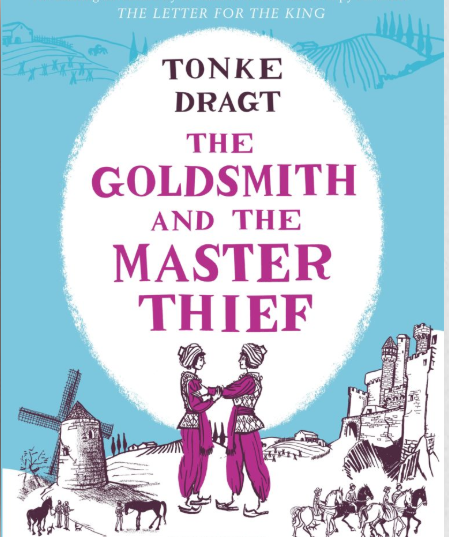When my friend and book blogger, Vishy, posted this glowing review of Tonke Dragt’s “The Letter for the King” last year, I was intrigued because it appeared to be all about knights and chivalry and adventure. Who doesn’t like the sound of that? A month or so ago, I found this book waiting to be reviewed on NetGalley, and my heart leapt! Thanks to Pushkin Press and NetGalley, I got a copy, and I finished reading it yesterday.
The Letter for the King is the thrilling story of one boy’s battle against evil, set in an enchanted
world of chivalry, courage and true friendship.
Says the book summary from Pushkin Press. I would say, thrilling is an understatement. As soon as I reached the last page, I was Googling to see if there is any way I could procure the sequel, “The Secrets of the Wild Wood.” I couldn’t wait to go on an adventure with Tiuri again.
The Letter for the King reinforces classic values like bravery, loyalty, and chivalry throughout Tiuri’s journey. But what makes the book rise above an average boy’s adventure is the fact that Tiuri is flawed despite having so many good qualities. He is impulsive, his bravery sometimes borders on foolhardiness, and his good heart sometimes comes in the way of his progress.
In most cases, though, Tiuri’s sensibilities save him from slippery situations. In fact, that’s the other aspect of the book. You would think that a story about knights set in the Middle Ages would have tons of action with swords and blood and gore. The Letter for the King barely has any sword-fights and, in fact, hardly any skirmishes.
The entire book moves forward on the themes of intrigue, plotting, and little pockets of suspense. Every few pages, Tiuri comes up against an obstacle, and his fate hangs in balance for a while before it’s resolved lending the book a fairly predictable cadence. At times, due to this, it reads more like the tale of a solo traveller on a hike across the Camino rather than an action packed tale.
Friendship is another strong theme in the book. Apart from Tiuri’s steadfast friendship with Piak, the quick bonds formed with the various people he meets on his journey, and the strong brotherhood that the knights share are all admirably and beautifully played out. But in that sense, it’s one of those books that you would stereotypically first think of for boys rather than for girls with its lack of any other emotion and significant women characters.
Mostly, the principles in the story never go to the grey area, and there is not much ambiguity. People are either good or bad, Tiuri has either friends or enemies, and they all mostly stay that way.
Written in the traditional manner of a good, old-fashioned adventure, the tale of Tiuri the knight has long served as one of the most loved bedtime stories for children, and a popular fantasy among adults in The Netherlands. It has been frequently compared to The Lord of the Rings where we have Frodo going on a mission, very similar to Tiuri. But I think the canvas of Tolkiens’ epic is way larger, more complex, and much darker.
At over 500 pages long, this is one long adventure. But I never the felt the weight of time even for a second as Tiuri’s encounters kept me enthralled.
Verdict: Make sure you get the sequel before you begin this.
Rating: 4.2/5



